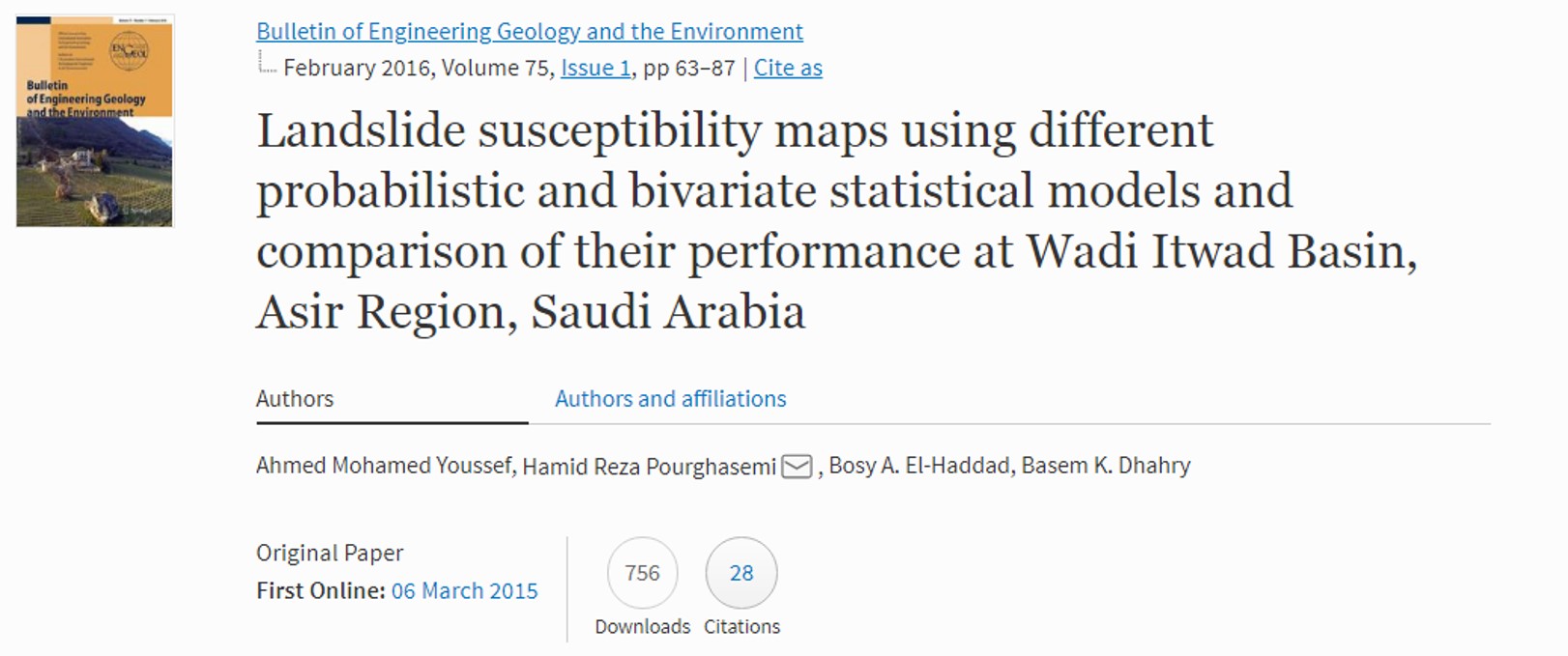The purpose of the current study is to produce landslide susceptibility maps using different probabilistic and bivariate statistical approaches; namely, frequency ratio (FR), weights-of-evidence (WofE), index-of-entropy (IofE), and Dempster–Shafer (DS) models, at Wadi Itwad, Asir region, in the southwestern part of Saudi Arabia. Landslide locations were identified and mapped from interpretation of high-resolution satellite images, historical records, and extensive field surveys. In total, 326 landslide locations were mapped using ArcGIS and divided into two groups; 75 % and 25 % of landslide locations were used for training and validation of models, respectively. Twelve layers of landslide-related factors were prepared, including altitude, slope degree, slope length, topography wetness index, curvature, slope aspect, distance from lineaments, distance from roads, distance from streams, lithology, rainfall, and normalized difference vegetation index. The relationships between the landslide-related factors and the landslide inventory map were calculated using different statistical models (FR, WofE, IofE, and DS). The model results were verified with landslide locations, which were not used during the model training. In addition, receiver operating characteristic curves were applied, and area under the curve (AUC) was calculated for the different susceptibility maps using the success (training data) and prediction (validation data) rate curves. The results showed that the AUC for success rates are 0.813, 0.815, 0.800, and 0.777, while the prediction rates are 0.95, 0.952, 0.946, and 0.934 for FR, WofE, IofE, and DS models, respectively. Subsequently, landslide susceptibility maps were divided into five susceptibility classes, including very low, low, moderate, high, and very high. Additionally, the percentage of training and validating landslides locations in high and very high landslide susceptibility classes in each map were calculated. The results revealed that the FR, WofE, IofE, and DS models produced reasonable accuracy. The outcomes will be useful for future general planned development activities and environmental protection.


